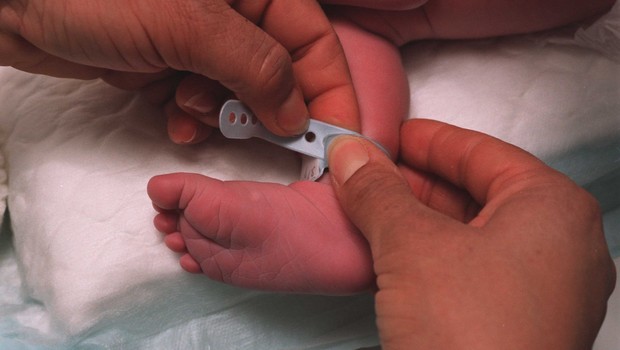((Automatic translation by Reuters, see disclaimer https://bit.ly/rtrsauto))
(Health Rounds is published Tuesdays and Thursdays. Think your friend or colleague should know about us? Send them this newsletter. They can also sign up here.) Posted by Nancy Lapid
Hello, Health Rounds readers! Today, we present preliminary data in rodents and animals that may herald important advances in combating antibiotic-resistant microbes and improving the delivery of chemotherapy drugs. We also present long-term data on Merck & Co MRK.N ‘s world-leading prescription cancer immunotherapy drug Keytruda.
Vaccines could help fight antibiotic resistance
Thanks to a new approach to vaccine development, researchers may have found a solution to the problem of antibiotic-resistant bacteria.
Their experimental vaccine gave mice high levels of immunity against lethal levels of Staphylococcus aureus and its “superbug” form, methicillin-resistant S. aureus, or MRSA, the researchers reported Wednesday in the journal Nature Communications.
Overuse of antibiotics has contributed to the development of superbugs that are resistant to most common treatments. Health experts say new antibiotics or other solutions are urgently needed.
To develop a vaccine, researchers must identify a molecule that the body will signal as foreign. These molecules, or antigens, trigger the immune system to produce antibodies to fight future infection.
While most vaccines are based on protein antigens, the new vaccine uses a carbohydrate called polybeta-(1-6)-N-acetylglucosamine, or PNAG, which is found in the cell wall of many bacteria.
The scientists were able to identify 32 PNAG carbohydrates, all of which are made up of five sugars, but with a different set of specific molecular components that are either linked to another small molecule called an acetyl group or not linked to anything else.
The team found two particularly promising versions of PNAG and attached them to a virus that infects bacteria.
When combined with the virus, the two PNAG combinations provided mice with “nearly complete protection” against S. aureus and MRSA infections, with minimal impact on healthy organisms living in the gut, the researchers said.
PNAG’s widespread presence in many bacteria “makes it an attractive target for vaccine development,” they added.
Closed-loop chemotherapy infusions may improve cancer treatment
One day, doctors will be able to use continuous chemotherapy monitoring systems to constantly monitor the amount of drug in a patient’s blood and automatically adjust the dose if necessary, the researchers say.
Similar to what exists today for diabetic patients who use insulin, their experimental “closed-loop” system will allow drug infusion to be continuously monitored and adjusted to maintain the dose within what we call the therapeutic range, that is, where it is supposed to be. most effective and non-toxic.
Current dosing of chemotherapy drugs may be inaccurate and based on unreliable formulas.
In a proof-of-concept study in rabbits, the amount of 5-fluorouracil circulating in the body was analyzed every five minutes using high-performance liquid chromatography-mass spectroscopy. The system helped keep blood drug levels within the target range nearly 45 percent of the time, compared with 13 percent of the time in animals not using the system, according to a report published Wednesday in the journal Med.
The researchers fabricated some of the system’s components by hand for their current experiments, but “each step could potentially be fully automated using commercially available devices, allowing for fully autonomous closed-loop monitoring of drug concentrations,” they said.
Current methods for calculating chemotherapy drug doses, typically based on patients’ height and weight, do not take into account differences that can affect the drug’s distribution in the body, as well as genetic variations that affect how the body uses it, researchers say. said.
In addition, levels of enzymes that affect the concentration of chemotherapy drugs are known to fluctuate depending on the time of day. During a single infusion, circadian rhythms can cause blood concentrations of the widely used drug 5-fluorouracil to fluctuate tenfold, researchers say.
A patient “may undergo cycles of treatment with minimal toxicity and then undergo one cycle with terrible toxicity,” study leader Dr. Douglas Rubinson of the Dana-Farber Cancer Institute in Boston said in a statement.
“Something has changed in the way a patient processes chemotherapy from one cycle to the next. Our outdated dosages do not take this change into account, and patients are suffering as a result.”
The benefits of Keytruda for kidney cancer patients last for many years.
Kidney cancer patients continued to experience a survival benefit from postoperative treatment with Merck’s Keytruda, more than four years after participating in a randomized trial, researchers reported Wednesday in the New England Journal of Medicine.
Use of the drug after surgery for renal cell carcinoma was approved by the U.S. Food and Drug Administration in 2021 based on the study results, but the duration of the survival effect was uncertain, the researchers said.
A total of 496 participants received Keytruda and 498 received placebo. At 48 months, the estimated overall survival was 91.2% in the Keytruda group and 86.0% in the placebo group.
The researchers also found that the pattern was consistent across different patient groups.
According to the report, because half of the patients were followed for more than 57 months and individual risk factors were taken into account, the risk of death during the study period was 38% lower in the Keytruda group.
The incidence of side effects was 20.7% in the Keytruda group and 18.6% in the placebo group. “This is the first study to show a statistically and clinically significant improvement in survival with postoperative treatment (for kidney cancer,” said Dr. Tony Choueiri of Dana-Farber Cancer Institute, who led the study, discussing the study results at a symposium earlier this year.




